"You can't exactly bake a man to your specifications... A hybrid of Einstein, Tarzan and Inge Meysel doesn't exist." -Peer Steinbruck
Of course, if you create enough chances, all the things that could eventually happen will come to pass. This is as true for human beings as it is for the physical Universe. And for our planet, our nearest major neighbor in the Universe -- the Moon -- provides us with a huge variety of sights, if only we're willing to wait.
Every 27.3 days, the Moon makes a complete orbit around the Earth, traveling a full 360° through space. As it changes its position relative to the Earth and Sun, different portions of the half of the Moon illuminated at any given time become visible, resulting in the Moon's phases.
You may have noticed, however, that the Moon's full cycle of phases doesn't take 27.3 days, but slightly longer: 2.2 days longer, to be more precise. This is because, as the Moon orbits the Earth, the entire Earth/Moon system is in orbit around the Sun! Remember, it's the relative position between those three bodies that determines what we see when we view the Moon from Earth, and it's the fact that Earth travels some 8% of the way around the Sun during a lunar month that requires the Moon to move those extra 2.2 days to complete the cycle of its phases.
At the same time, there are a few more interesting things going on with the Moon. One is that its path around the Earth, although approximately circular, is in fact actually an ellipse. At its farthest point in its orbit, the Moon is more than 406,000 km away from Earth, while at closest approach, it's some 50,000 km closer.
 Image credit: John Walker of http://www.fourmilab.ch/.
Image credit: John Walker of http://www.fourmilab.ch/.
The variation you see in a typical lunar month means that the Moon appears about 12-13% bigger at perigee (its closest point to Earth) than at apogee (its farthest). As the Moon orbits our planet according to Kepler's laws of motion, this also means that it moves a little faster when its closest to us than when it's farther away. As a result of this, we don't always see exactly the same half of the Moon, even though it's tidally locked to us; there's a little bit of apparent "rocking," which is known as lunar libration.
The Earth orbits the Sun and the Moon orbits the Earth, and so you might think that every month, when the Moon is new, it would pass between the Earth and Sun, and when the Moon is full, the Earth passes between the Sun and Moon. A naïve picture of the Moon's phases would seem to indicate exactly this.
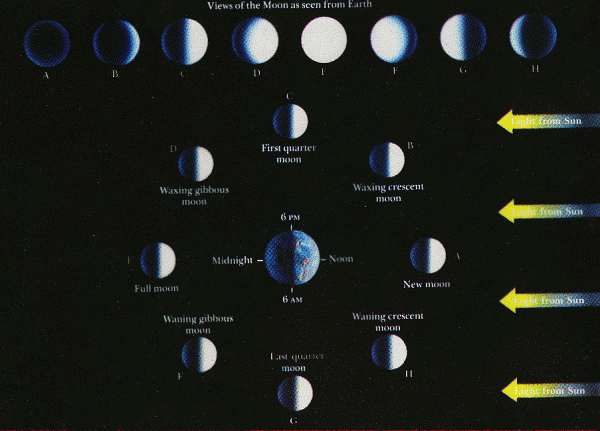 Image credit: Dr. Guy Worthey of Washington State University, via http://astro.wsu.edu/.
Image credit: Dr. Guy Worthey of Washington State University, via http://astro.wsu.edu/.
But you've got to remember that the Earth orbits the Sun in one plane, and the Moon orbits the Earth in a slightly different plane! These two planes are at a slight angle to one another -- just a hair over 5° -- but since the Moon and Sun each only take up around 0.5° on the sky, that means that during the vast majority of the time the Moon, Earth and Sun can not form a straight line in the sky.
It's only when -- during a new or full Moon -- these three bodies do happen to line up, that we get one of the most spectacular celestial phenomena as seen from Earth: eclipses. There are typically two opportunities for this per year: once when each of the Moon's nodes, or the places where it crosses the Earth's orbital plane around the Sun, line up during a new or full Moon.
During a full Moon, the Earth's shadow blocks the Moon from the Sun, which creates a lunar eclipse, as seen by us. There are typically two of these per year (as you can see), although occasionally you'll have back-to-back months where the Moon just barely clips the Earth's shadow, once from above and once from below, as was the case in April and May of this year.
You can have a total lunar eclipse, when the entire Moon plunges into Earth's shadow, a partial lunar eclipse, where a fraction of the Moon enters Earth's shadow, or a penumbral lunar eclipse, where the entire Moon still receives sunlight, but an observer on part of the Moon would see a fraction of the Sun blocked out by the Earth.
That same variety -- and same frequency -- occurs for the other possible alignment: where the new Moon passes between the Earth and the Sun.
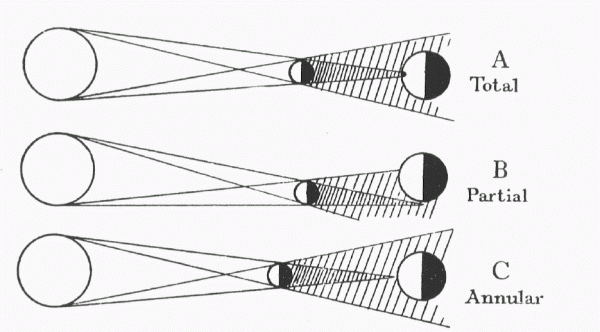 Image credit: John McFarland, Armagh Observatory, via http://www.arm.ac.uk/.
Image credit: John McFarland, Armagh Observatory, via http://www.arm.ac.uk/.
These are solar eclipses, and we typically think of three varieties for them as well: partial eclipses, where the Moon appears to partially block out the Sun as seen from Earth, and then the other two (much more interesting) types. You see, the Moon and Sun happen to be almost the same angular size as viewed from Earth: about half-a-degree. Depending on where the Sun, Moon and Earth are in their relative orbits, sometimes the Moon appears larger, while at other times the Sun appears larger as viewed from our planet.
When the Moon appears larger than the Sun, it can block the Sun's entire disk, casting a shadow on Earth and plunging that shadowy region into temporary darkness. That's what a total solar eclipse is. When the opposite is true -- when the Sun appears larger than the Moon -- you get an annular eclipse, where the Moon passes in front of the Sun but is insufficient to block the entire disk, creating a ring of sunlight, or an annulus, as seen from Earth. (Longtime readers may even remember I went and hunted the one that happened last year!)
About a third of all solar eclipses are partial, where no place on Earth will see either a total or annular eclipse, about a third are annular and about another third are total. The Moon, on average, appears larger than the Sun around 50% of the time and smaller the other 50%, which accounts for that distribution. When the Moon appears larger, a shadow is cast on the Earth; a shadow that's been captured from space!
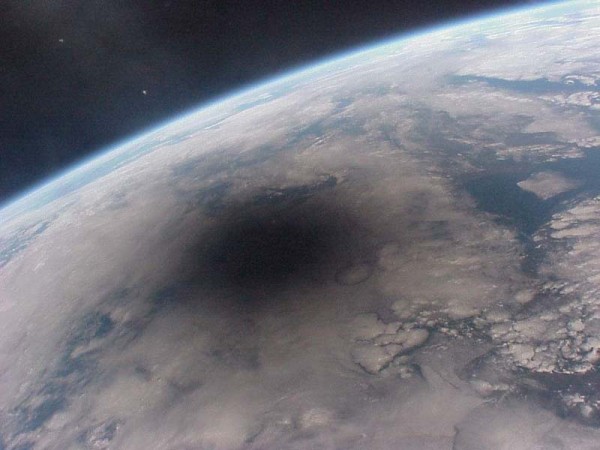 Image credit: Mir 27 Crew; Copyright: CNES, of http://www.cnes.fr/.
Image credit: Mir 27 Crew; Copyright: CNES, of http://www.cnes.fr/.
But think about this for a second. During a solar eclipse -- either a total or an annular eclipse -- the Moon's path needs to cut across the entire Earth. Even though this is a relatively quick process, lasting around five-to-six hours, it isn't instantaneous. You might wonder whether there's ever a time where an eclipse will start off as an annular eclipse (but just barely), and then during that five-to-six hour timeframe, the Moon moves slightly closer to Earth, just enough that an observer can experience a total eclipse (again, just barely) by the end? Or whether the opposite is true: that an eclipse can start off total and then -- as the Moon moves away from Earth -- transition into annular for an observer on a different part of Earth?
Yes you can! That's known as a hybrid eclipse, and it turns out to be the rarest of all eclipses, making up just over 2% of all (solar+lunar) eclipses! It turns out that not only the orbits of these three bodies, but also the fact that the Earth is of a finite size (and the Moon's shadow has a little longer to go to reach Earth's edges) helps make this as common as it actually is!
The 21st Century will see only 7 of them, including the one in 2005 (shown above) and -- believe it or not -- the very next one, on November 3rd of this year! A lucky (and very, very dedicated) observer located a few hundred miles off the coast of Liberia could actually watch the transition, experiencing a little of both the total and annular phases in the same eclipse, something that (as far as I know) has never been photographed or video captured![* -- see comment 7 for more detail on this]
Although a hybrid eclipse typically occurs, on average, about once per decade, there's actually a huge variety in their frequencies. The 17th Century saw a whopping 24 hybrid eclipses, while the 23rd Century will see a mere three. If you miss the one this year, you'll have to wait until 2023 for your next chance at a hybrid, the rarest of all eclipses, where observers in Indonesia will actually have a chance to experience the shadow and the annulus at the same location!
- Log in to post comments

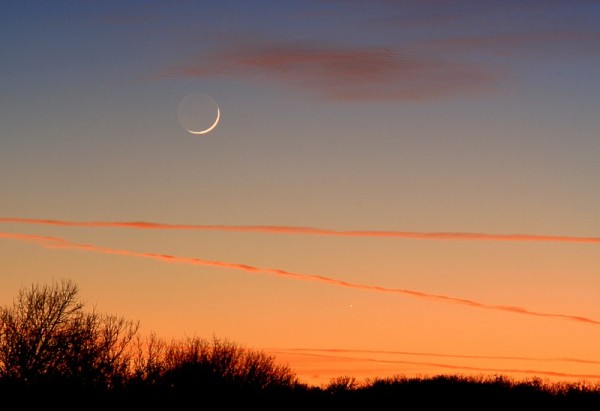
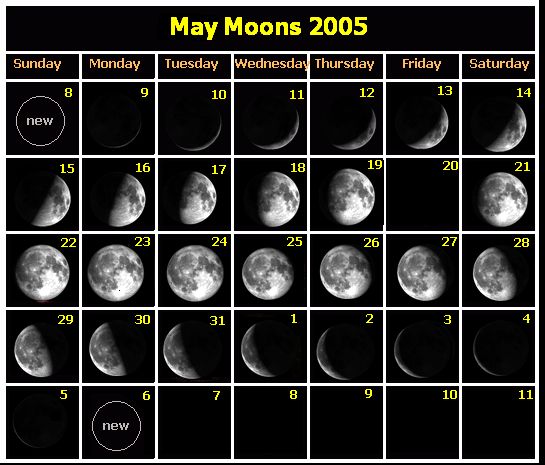
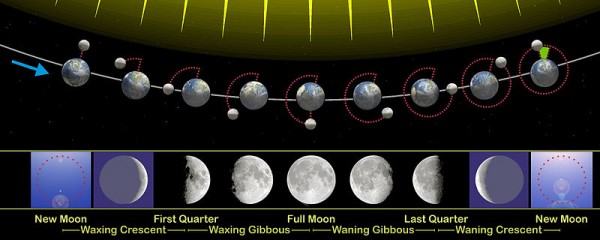


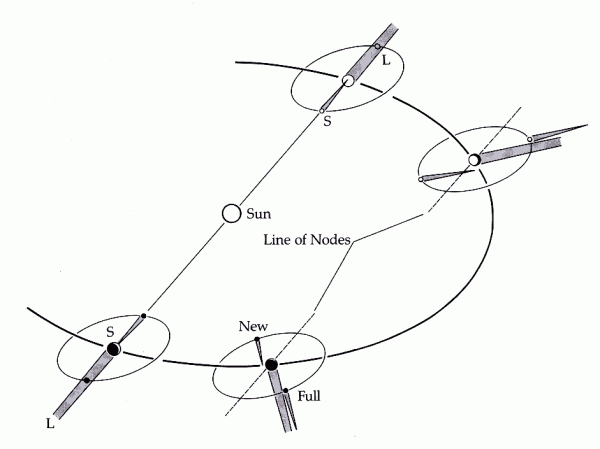

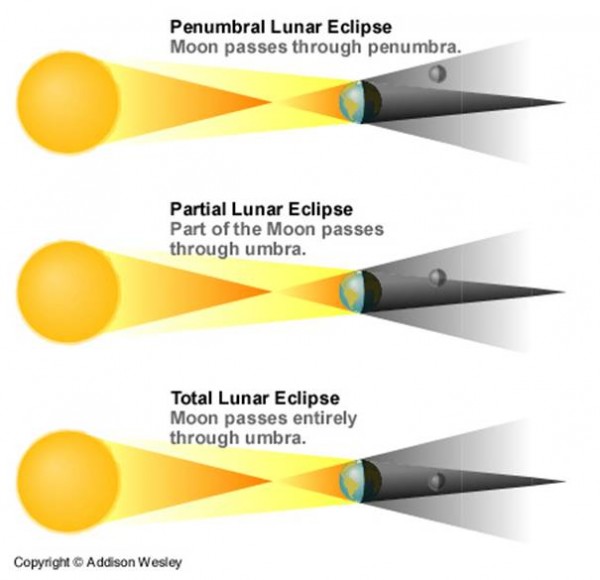
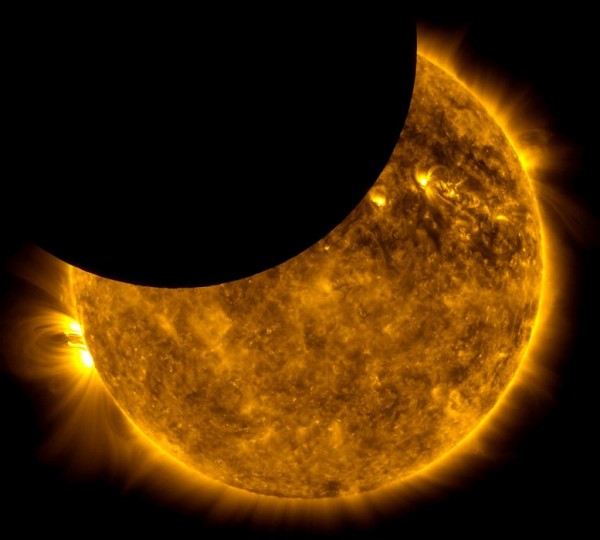

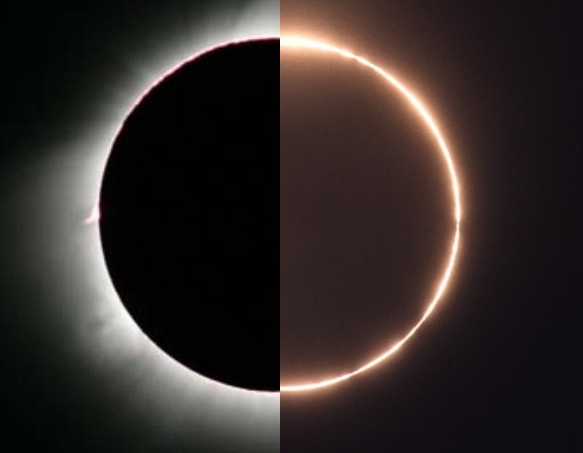

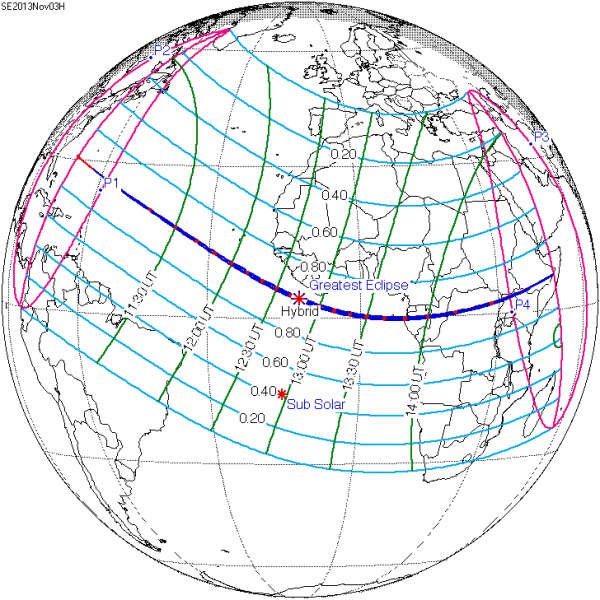
I have read somewhere that the transition into and out of the total eclipse shadow would influence gravimeters somehow, thus shortly vary the earth's gravitational acceleration.
Does anyone know more about such effects?
There'd be nothing special about the gravity there.
There may be an issue with, for example, the "thermal shock" of coming out of eclipse, possibly. Gravimeters nowadays can tell when a truck is passing half a mile away.
But there's so little to go on with your query, that any answer other than "You've been given a load of BS there" is unsupportable.
The Allais effect.
All we need is "A lucky (and very, very dedicated) observer located a few hundred miles off the coast of Liberia.. (to photograph and capture on video).. the transition.. (from) the total and annular phases in the same eclipse.. (and it)... has never been photographed or video captured (before)!!!!"
Well come on Ethan. Your blog is being hosted on the National Geographic website. Send them an email; get refer them to your link. Offer to even tag along as the consultant on the expediion.
No this is your gig, they are your consultant team. Put together your proposal put it on Kickstarter if National Geographic won't fund it and go! I mean for $10,000 to $50,000 you've got to be able to get it done. Chop, chop no time to waste. We are your base to fund this science, National Geographic can chip in too. $100 x 100 people = $10,000; yes I can multiply.
We want to see that video. So if no project is underway, kickstart on.
I mean we are talking science, nature, beautiy; history in the making.
For the first time in the history of the universe; on planet Earth Ethan Siegel and a team of photographers have captured the transition.. (from) the total and annular phases in the same eclipse in photograph or video.
Make it so.
@Dave (#3):
Thanks. That helps a bit - and also generates more questions:
How can a short slight increase or decrease of gravitation change the plane of the pendulum?
And how by that extent?
Would a gyro also change its plane?
Aren't the forces to change the plane rather large?
I always enjoy reading your posts, especially the ones related to the moon. I learned a lot, thank you.
OKThen,
Unfortunately, the point of hybridization (a term I just made up) is actually, legitimately only a point. Annular eclipses can last up to 11+ minutes, as a much smaller apparent Moon transits across the face of the Sun. Similarly, Total eclipses can last for more than six minutes, as the largest Moon can block the smaller Sun for some time.
But where you get that location of annular-to-total transition (or vice versa), the Moon and Sun are exactly the same size, momentarily. In other words, the Moon's shadow striking the Earth is narrowed down to exactly a point where that happens. It wouldn't be nearly as spectacular as you hoped.
For this eclipse, there are two points where you get that perfect "hybrid" moment: one about 50-100 miles southwest of Bermuda, and one a short drive away from Galkayo, Somalia. You can check the interactive map here: http://eclipse.gsfc.nasa.gov/SEgoogle/SEgoogle2001/SE2013Nov03Hgoogle.h…
Unfortunately, if you want to see that transition -- from annulus to total shadow and, conceivably, back again -- you'd need to find a way to stay in the path of the Moon's shadow, which technologically can only be accomplished via very rapid air travel. (Not rocket-level travel, but supersonic flight for certain.)
Still, I'd love to go on -- or even help plan -- that expedition!
@Ethan:
related to my comment #5:
The questions are actually serious.
I would like to learn how to calculate plane-turning by varying gravity - could you help me, please?
Thanks a lot in advance.